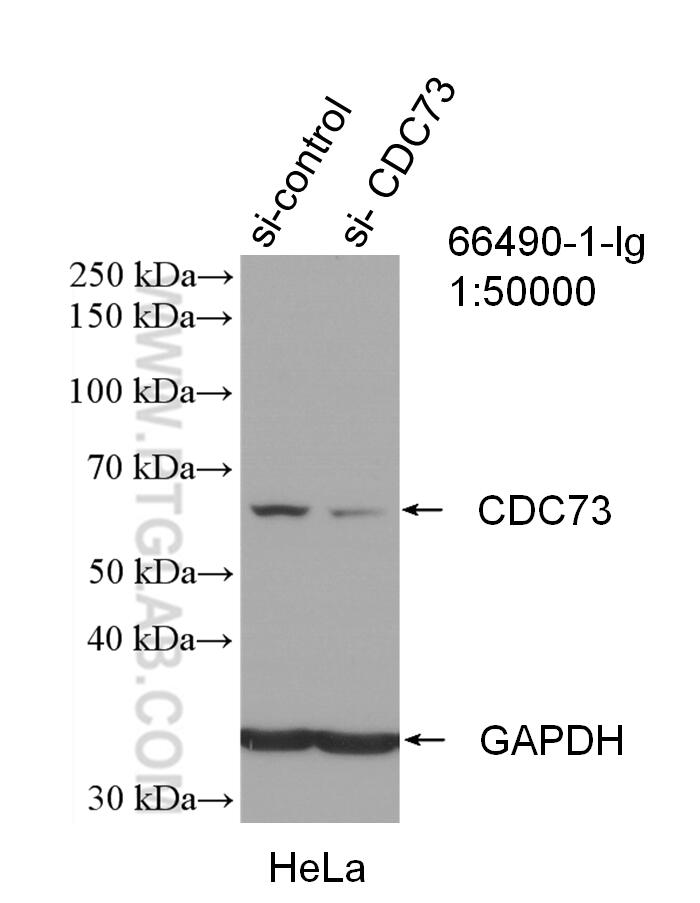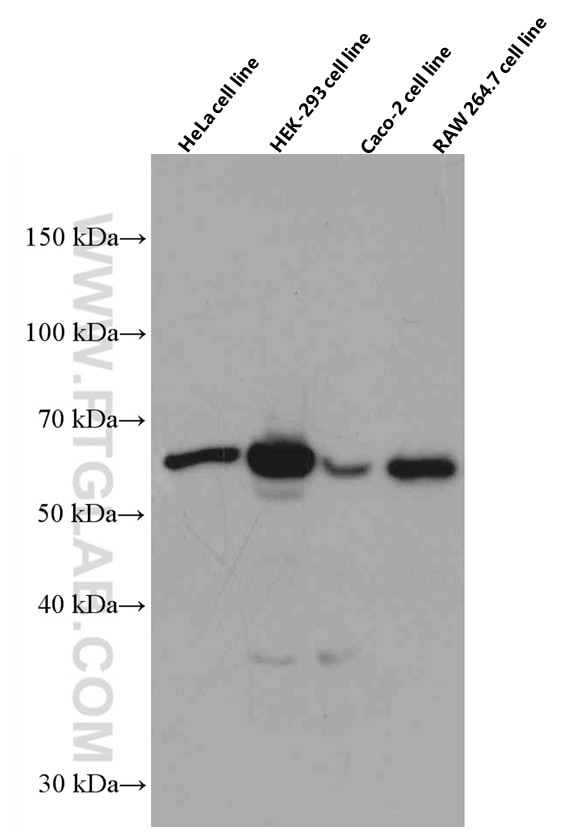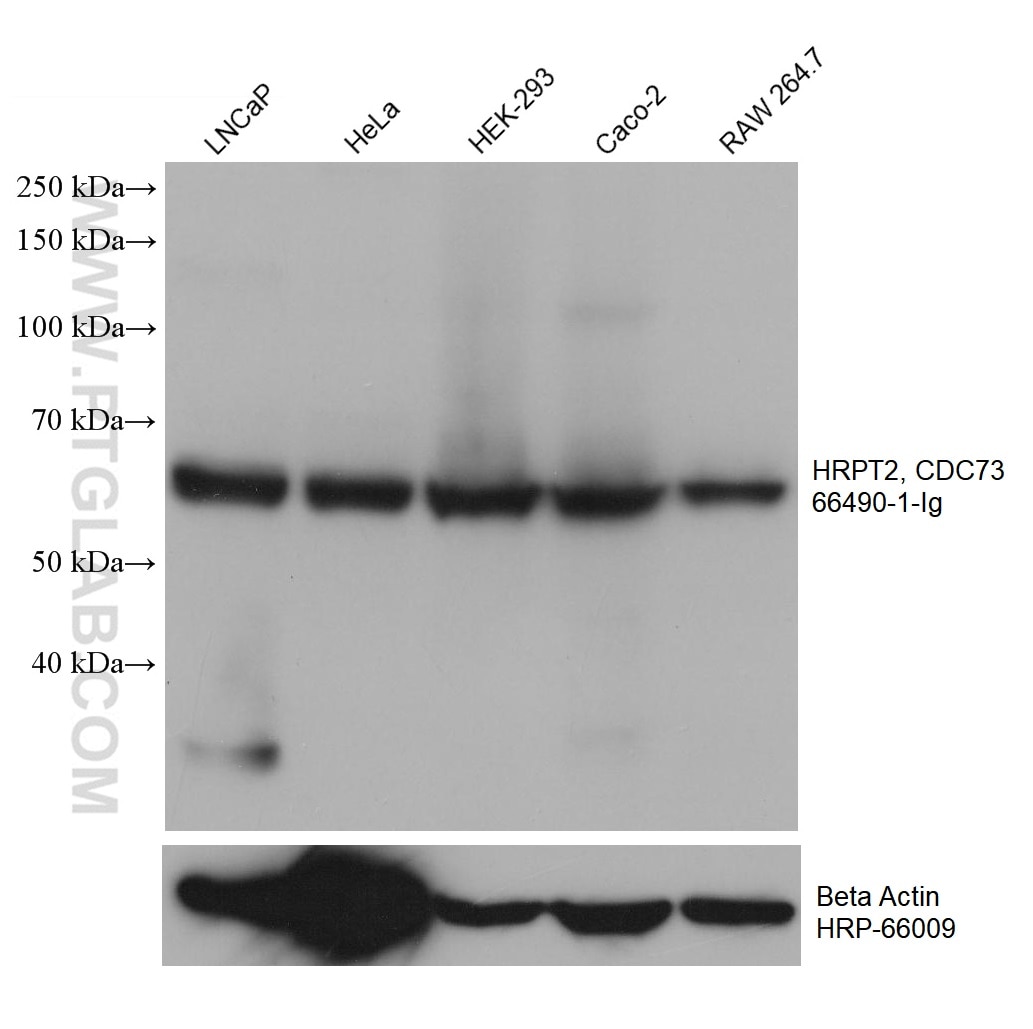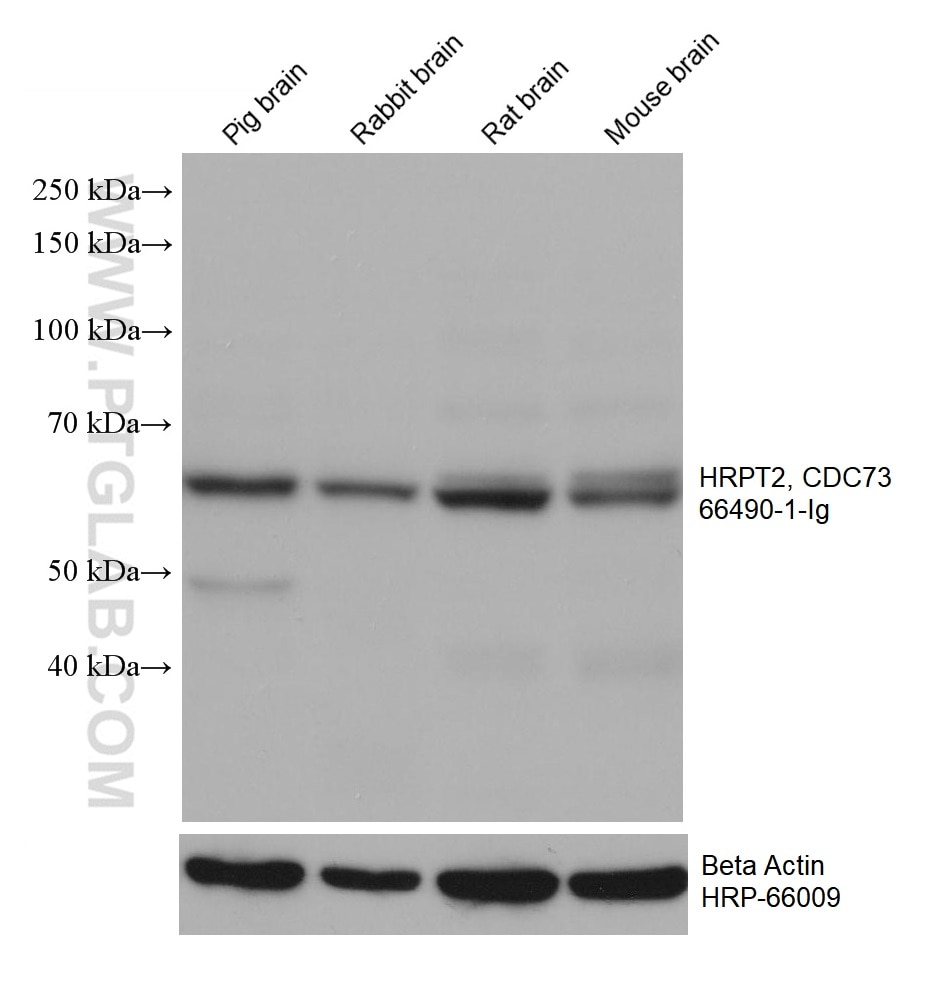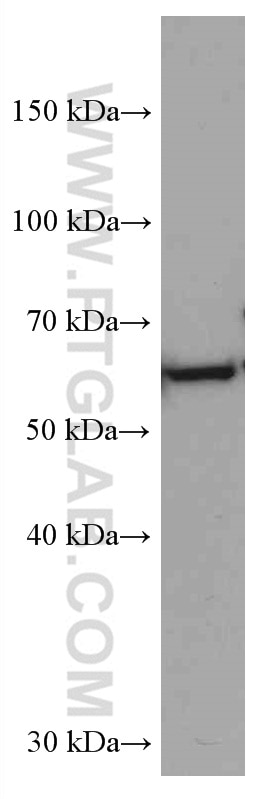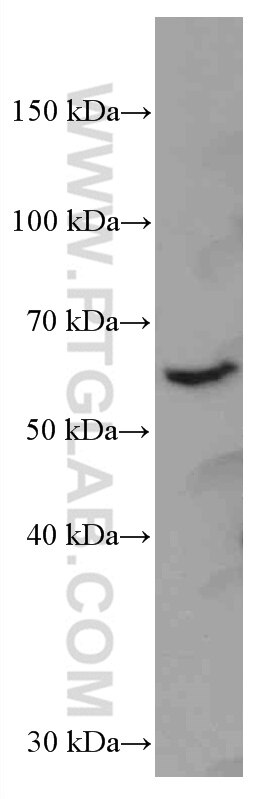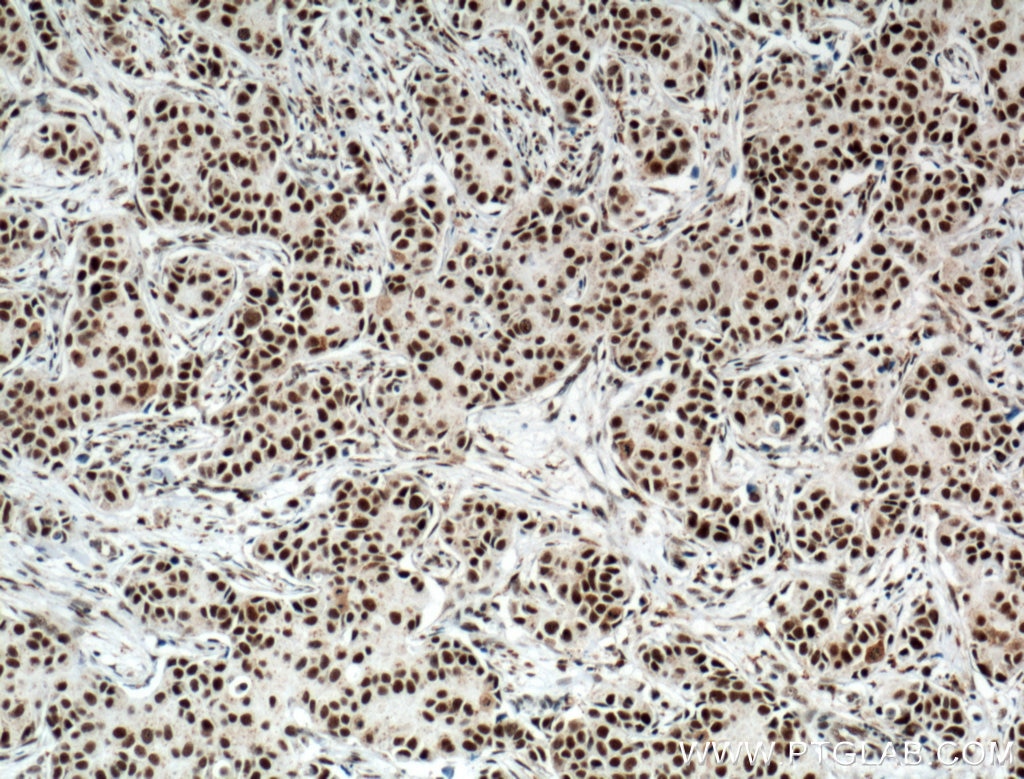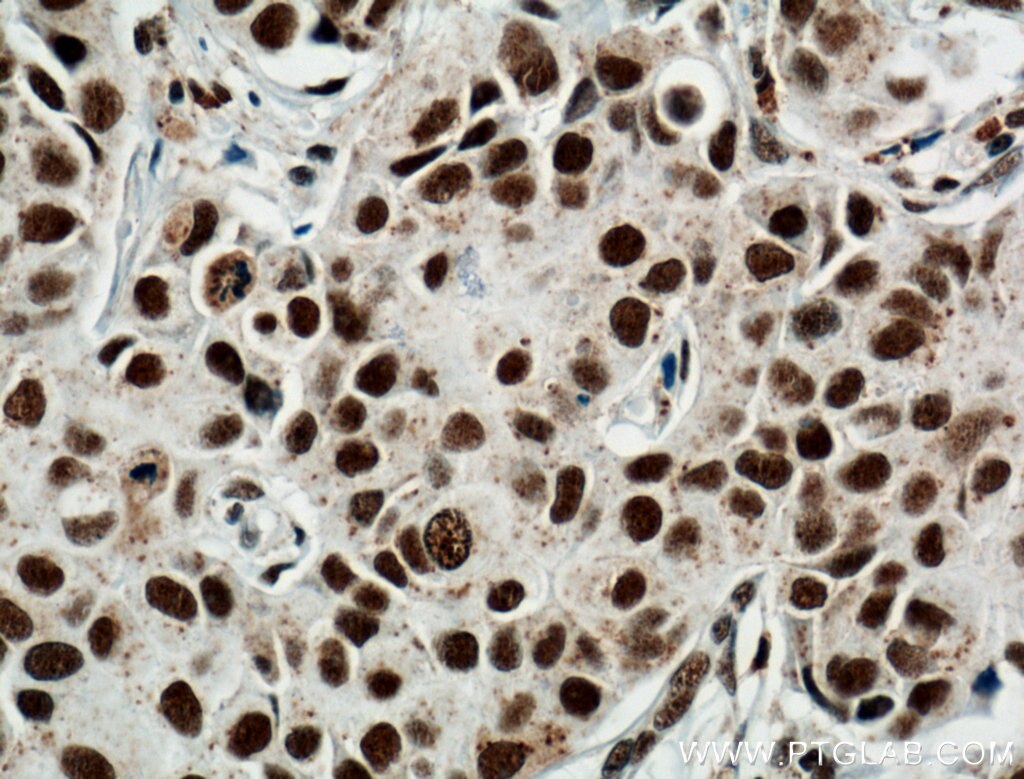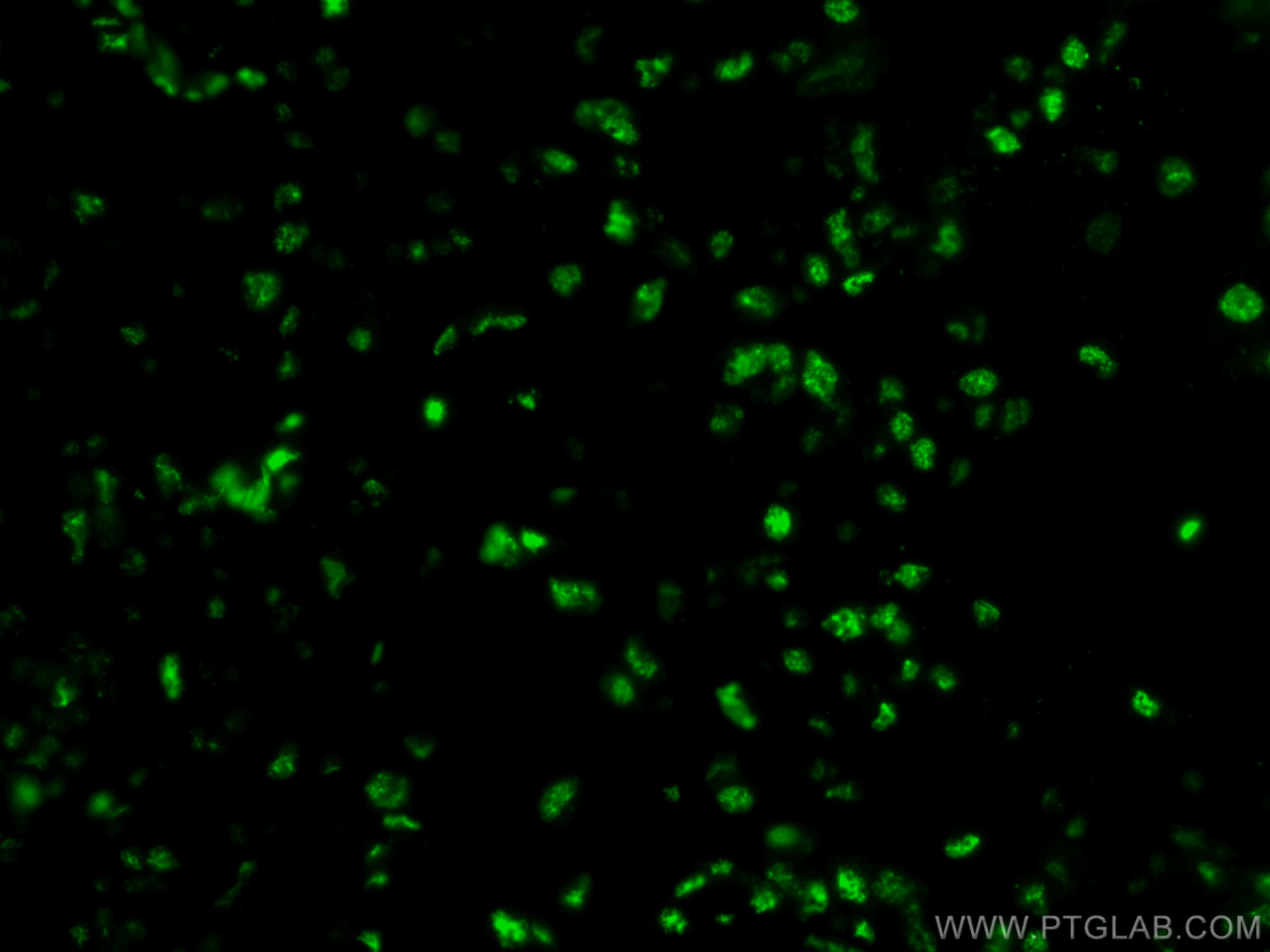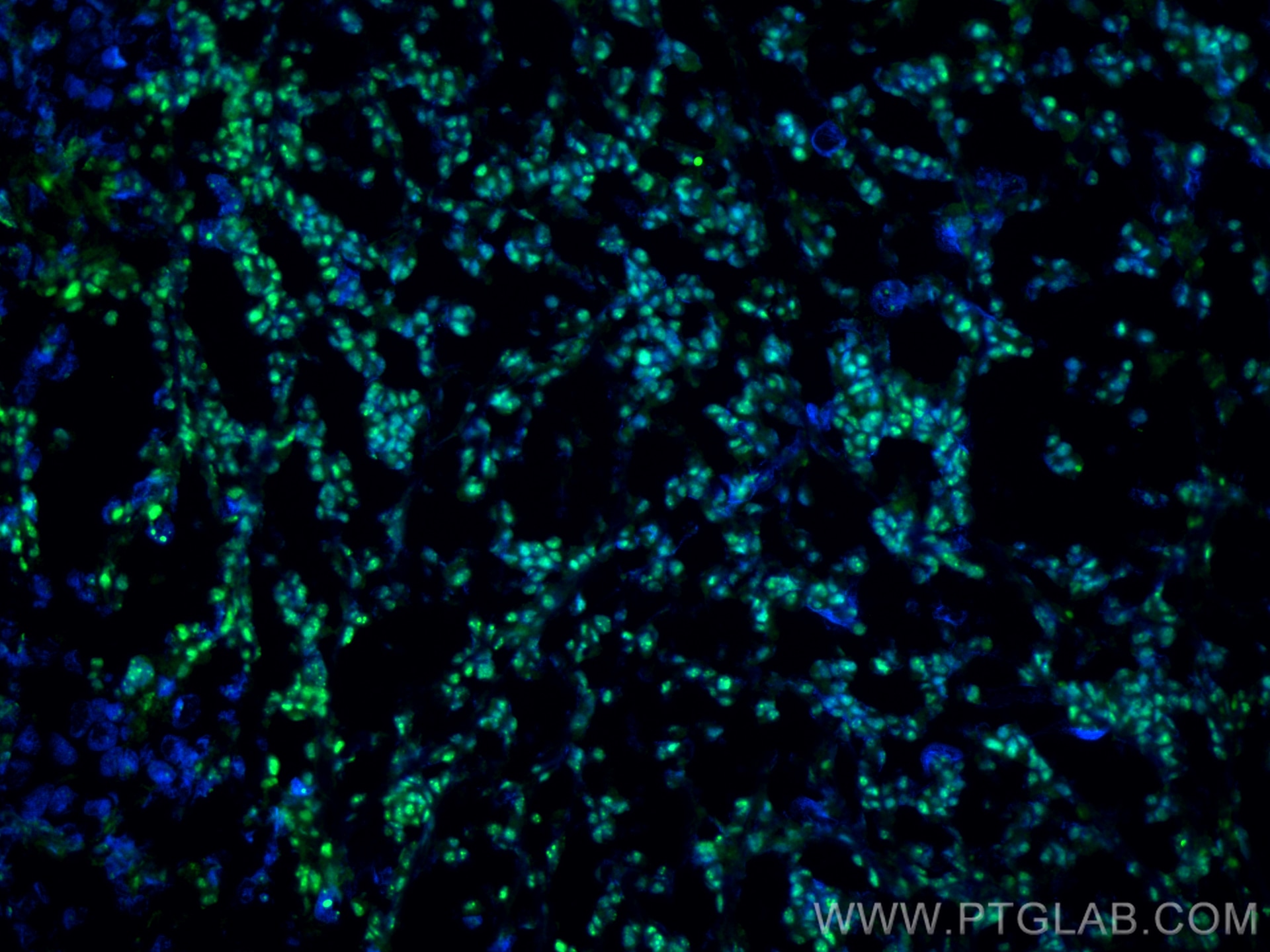Validation Data Gallery
Tested Applications
| Positive WB detected in | pig brain tissue, LNCaP cells, HeLa cells, mouse brain tissue, HEK-293 cells, Caco-2 cells, RAW 264.7 cells |
| Positive IHC detected in | human breast cancer tissue Note: suggested antigen retrieval with TE buffer pH 9.0; (*) Alternatively, antigen retrieval may be performed with citrate buffer pH 6.0 |
| Positive IF-P detected in | human breast cancer tissue |
| Positive IF-Fro detected in | mouse breast cancer |
Recommended dilution
| Application | Dilution |
|---|---|
| Western Blot (WB) | WB : 1:5000-1:50000 |
| Immunohistochemistry (IHC) | IHC : 1:200-1:800 |
| Immunofluorescence (IF)-P | IF-P : 1:50-1:500 |
| Immunofluorescence (IF)-FRO | IF-FRO : 1:200-1:800 |
| It is recommended that this reagent should be titrated in each testing system to obtain optimal results. | |
| Sample-dependent, Check data in validation data gallery. | |
Published Applications
| WB | See 2 publications below |
| IHC | See 1 publications below |
Product Information
66490-1-Ig targets HRPT2, CDC73 in WB, IHC, IF-P, IF-Fro, ELISA applications and shows reactivity with human, mouse, rat, pig samples.
| Tested Reactivity | human, mouse, rat, pig |
| Cited Reactivity | human, mouse |
| Host / Isotype | Mouse / IgG2a |
| Class | Monoclonal |
| Type | Antibody |
| Immunogen |
CatNo: Ag2959 Product name: Recombinant human HRPT2; CDC73 protein Source: e coli.-derived, PGEX-4T Tag: GST Domain: 109-409 aa of BC014351 Sequence: WRTRTTILQSTGKNFSKNIFAILQSVKAREEGRAPEQRPAPNAAPVDPTLRTKQPIPAAYNRYDQERFKGKEETEGFKIDTMGTYHGMTLKSVTEGASARKTQTPAAQPVPRPVSQARPPPNQKKGSRTPIIIIPAATTSLITMLNAKDLLQDLKFVPSDEKKKQGCQRENETLIQRRKDQMQPGGTAISVTVPYRVVDQPLKLMPQDWDRVVAVFVQGPAWQFKGWPWLLPDGSPVDIFAKIKAFHLKYDEVRLDPNVQKWDVTVLELSYHKRHLDRPVFLRFWETLDRYMVKHKSHLRF 相同性解析による交差性が予測される生物種 |
| Full Name | cell division cycle 73, Paf1/RNA polymerase II complex component, homolog (S. cerevisiae) |
| Calculated molecular weight | 531 aa, 61 kDa |
| Observed molecular weight | 61 kDa |
| GenBank accession number | BC014351 |
| Gene Symbol | HRPT2/CDC73 |
| Gene ID (NCBI) | 79577 |
| RRID | AB_2881855 |
| Conjugate | Unconjugated |
| Form | |
| Form | Liquid |
| Purification Method | Protein A purification |
| UNIPROT ID | Q6P1J9 |
| Storage Buffer | PBS with 0.02% sodium azide and 50% glycerol{{ptg:BufferTemp}}7.3 |
| Storage Conditions | Store at -20°C. Stable for one year after shipment. Aliquoting is unnecessary for -20oC storage. |
Background Information
Parafibromin is a product of the hyperparathyroidism-jaw tumor syndrome gene HRPT2/CDC73, a putative tumor suppressor gene recently implicated in the autosomal dominant hyperparathyroidism-jaw tumor familial cancer syndrome, sporadic parathyroid cancer, and a minority of families with isolated hyperparathyroidism (PMID: 15580289). Defects in CDC73 are causes of hyperparathyroidism type 1 (HRPT1) and hyperparathyroidism type 2 (HRPT2) as well as parathyroid carcinoma (PRTC) (PMID: 12434154). Tumor suppressor parafibromin to the transcription elongation and RNA processing pathway as a PAF1 complex- and RNA polymerase II-bound protein (PMID: 15923622). Besides, parafibromin is also involved in post-transcriptional control pathways (PMID: 16116486). Recent report has revealed that pathogenic mutation, such as CDC73 gene mutation, is able to affect histone monoubiquitination (PMID: 22021426).
Protocols
| Product Specific Protocols | |
|---|---|
| IF protocol for HRPT2, CDC73 antibody 66490-1-Ig | Download protocol |
| IHC protocol for HRPT2, CDC73 antibody 66490-1-Ig | Download protocol |
| WB protocol for HRPT2, CDC73 antibody 66490-1-Ig | Download protocol |
| Standard Protocols | |
|---|---|
| Click here to view our Standard Protocols |
Publications
| Species | Application | Title |
|---|---|---|
J Proteomics To explore the regulatory role of Wnt/P53/Caspase3 signal in mouse ovarian development based on LFQ proteomics | ||
Horm Res Paediatr A Familial Case of a Whole Germline CDC73 Deletion Discordant for Primary Hyperparathyroidism. | ||
bioRxiv Resistance of estrogen receptor function to BET bromodomain inhibition is mediated by transcriptional coactivator cooperativity |

